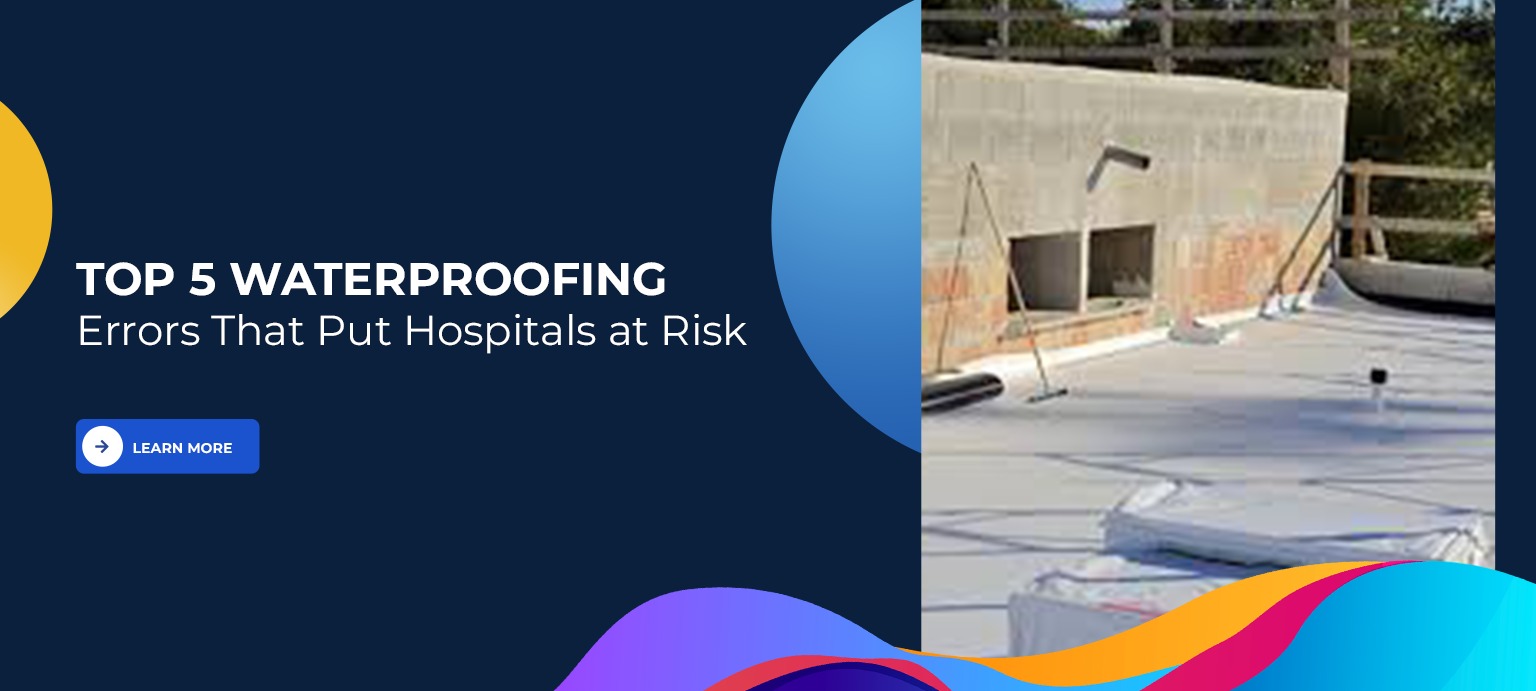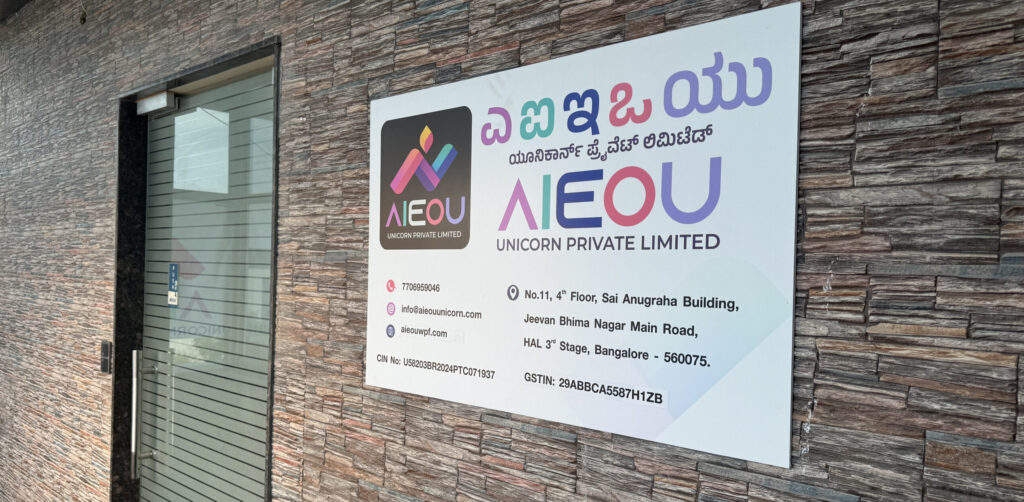Hospitals are critical infrastructure, where safety, functionality, and hygiene are non-negotiable. While many institutions focus on state-of-the-art technology and streamlined operations, a silent threat often lurks within the very foundation of the building: water damage. Waterproofing errors can lead to structural damage, mold growth, equipment failure, and more, ultimately compromising patient care and safety.
To ensure long-term durability and safety, identifying and avoiding these common waterproofing errors is key. Here’s a breakdown of the top five mistakes to watch out for.
1. Using Improper Waterproofing Materials
Every area of a hospital serves a unique function, meaning different spaces require tailored waterproofing solutions. For instance, basements or utility areas might need HDPE membranes, while rooftops and terraces might benefit from crystalline coatings or polyurethane-based systems.
Using the wrong materials or subpar products leads to quick wear and tear, water infiltration, and costly repairs down the line. Hospitals must work with experienced contractors who use advanced, high-performance materials like crystalline admixtures, epoxy grout, and specialized sealants designed to meet the structural and durability needs of medical facilities.
Pro Tip:
Always conduct a thorough assessment of the area to determine the specific waterproofing requirements before selecting materials.
2. Neglecting Expansion Joints
Hospitals, like any large structure, experience natural movements caused by temperature changes or settlement. Expansion joints are critical for accommodating these shifts without causing structural damage.
However, neglecting to waterproof these joints properly can result in water seepage, structural instability, and corrosion over time. Investing in advanced joint sealant systems not only prevents leaks but also ensures the long-term durability of expansion joints.
Pro Tip:
Use durable, flexible joint sealants tested to withstand hospital-grade environments, and schedule regular maintenance to check their integrity.
3. Ignoring Roof and Terrace Waterproofing
With constant exposure to weather elements like rain, heat, and wind, roofs and terraces are among the most vulnerable areas in any building, including hospitals. Water seepage through these surfaces can lead to leaks, mold growth, and damage to underlying structures, posing risks to patients, staff, and sensitive medical equipment located below.
Many hospitals fail in roof waterproofing due to improper slope design, inadequate drainage systems, or poor-quality materials. Advanced membranes and coatings can offer the robust protection necessary for these high-exposure areas.
Pro Tip:
Ensure proper slope design and drainage for all roofs. Combine waterproof membranes with protective insulation to safeguard against extreme weather conditions.
4. Overlooking Utility Areas and Sunken Slabs
Utility rooms, kitchens, restrooms, and other areas with frequent exposure to water often have a hidden Achilles’ heel: water seepage from sunken slabs. Improper waterproofing in these areas can lead to water intrusion, weakening the structural integrity of floors and walls, and creating an unhygienic environment.
Waterproofing solutions such as PU grout injection, crystalline coatings, and specialized sealants are essential to prevent leaks and ensure long-lasting protection.
Pro Tip:
Perform periodic inspections in high-moisture areas to identify early signs of seepage or deterioration.
5. Failing to Address Water Retaining Structures
Hospitals often feature water-retaining structures like swimming pools, water tanks, and sewage treatment plants. These areas must remain completely leak-free to avoid water loss, contamination, and structural instability.
Applying generic waterproofing methods is a common mistake. Instead, hospitals should use specialized solutions such as crystalline admixture systems and waterproof plaster tailored for water-retaining applications.
Pro Tip:
When installing or repairing water-retaining structures, consult experts who specialize in durable, long-term waterproofing for these complex systems.
Why Waterproofing Matters for Hospitals?
Poor waterproofing isn’t just a maintenance issue for hospitals; it’s a pressing safety concern. Water damage in a healthcare setting can lead to:
- Mold growth that compromises air quality and puts patients at health risk, especially those with respiratory conditions.
- Equipment failure if moisture infiltrates areas with critical medical devices.
- Disruption of daily operations due to water damage or leaks in key areas.
- Increased repair costs and downtime as the facility struggles to address preventable issues.
Hospitals must adopt a proactive approach toward waterproofing to ensure uninterrupted care for patients and long-term structural integrity.
Partner with Experts in Waterproofing
Protecting a hospital from water damage requires precise execution, advanced materials, and experienced teams. At AIEOU Unicorn Pvt. Ltd., we specialize in customized waterproofing solutions designed to meet the unique needs of hospitals and other critical infrastructure.
Our services include:
- Structural Waterproofing: Protect basements, rooftops, and terraces with cutting-edge systems like HDPE membranes and crystalline coatings.
- Specialized Waterproofing: Secure swimming pools, water tanks, and expansion joints with advanced admixtures and sealants.
- Repair & Rehabilitation: Restore structural integrity through expert leakage repair using PU and epoxy grout.
We take pride in our tailored approach, ensuring that every hospital we work with receives long-term protection, reduces risks, and operates without interruptions.
Take the First Step
Is your hospital’s waterproofing up to standard? Don’t leave it to chance. Contact AIEOU Unicorn Pvt. Ltd. today to schedule an assessment and explore how our advanced waterproofing solutions can safeguard your facility.

